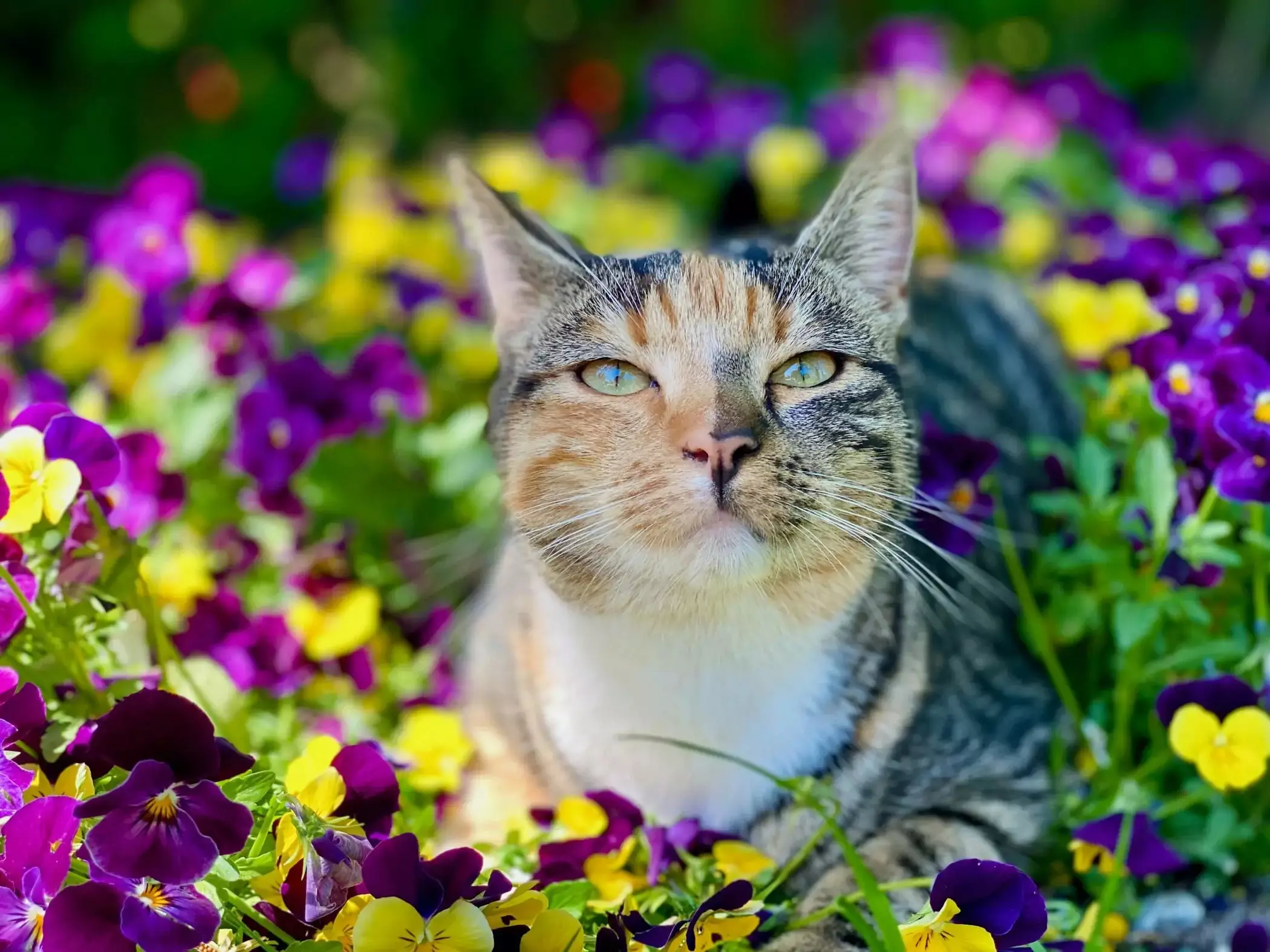As any cat owner knows, felines possess an innate curiosity and desire for exploration. With the arrival of National Gardening Week on May 1st, the feline welfare charity Cats Protection offers essential guidance for cat lovers eager to harmonize their outdoor spaces with their furry companions. Creating a cat-friendly garden isn’t merely a trend; it reflects a commitment to animal welfare and ensures our pets can experience the outdoor world safely.
Dangers Lurking Among the Greens
When gardening, one critical consideration is the safety of our furry friends. Certain plants, while beautiful, pose serious health risks to cats. Lilies are at the top of the list; all parts of the plant are toxic, and even the pollen can be deadly if a cat comes into contact with it. Even a playful brush against a lily can lead to catastrophic outcomes. Similarly, daffodils can be problematic due to their toxic alkaloids, making them just as perilous for inquisitive kitties. Awareness is key—choosing non-toxic alternatives is an effective step towards a safer garden.
Embrace Cat-Friendly Botany
Instead of surrounding your garden with hazardous flora, why not opt for plants that are both beautiful and safe? Buddleias, often known as butterfly bushes, not only thrive in sunny spots but also attract delightful pollinators like bees and butterflies. Additionally, catnip (Nepeta cataria) is a must-have for many felines. Its enticing aroma can provide endless entertainment for your cat while ensuring their safety. Crafting an aesthetically pleasing and cat-compatible landscape is entirely achievable.
Designating Feline Restrooms
Creating a personal elimination space is a considerate gesture for both cats and neighbors. Allocate a specific area of the garden for your cat’s needs, ensuring it is regularly maintained and cleaned. Avoid composting the waste due to the risks associated with certain parasites, particularly toxoplasmosis. Additionally, strategically placing small pebbles around your plants can discourage your cat from using the rest of the garden as a litter box, fostering a more harmonious outdoor environment.
Providing Shelter and Comfort
Cats relish the sensation of hiding from potential threats while soaking in the warmth of the sun. Incorporating perennials such as Mexican orange blossom or ceanothus not only creates stunning visuals but also offers shade and sanctuary for your pet. These green spaces can serve as natural retreats, allowing your feline to recharge and stay out of harsh sunlight. This attention to comfort transforms your garden into a tranquil haven for your pet.
Inclusive Scratching Opportunities
Any cat parent understands the importance of scratching. Instead of relegating your floor to the destruction of a scratching post, embrace nature and provide cats with vertical and horizontal surfaces to indulge their instincts. Large tree trunks or even sturdy logs positioned strategically in the garden can serve as the perfect playground for your feline friends. Not only does this cater to their scratching needs, but it also welcomes local wildlife into your outdoor space.
Elevated Vantage Points
Cats are natural climbers, and providing elevated spaces can enhance their enjoyment of the outdoors. Install shelves or even small platforms on walls or fences to create perches that allow your cat to observe their territory from new heights. For those adventurous enough, a ladder to your shed can transform into an appealing climbing route. However, ensure that these areas are designed with safety in mind—an escape route for returning home is a must!
Water Features that Entice
Cats aren’t just content with a mundane water bowl; they thrive when they have access to flowing water. Consider introducing a outdoor water feature—like a pond or a bubbling fountain—to attract your feline friend. Not only do flowing waters engage their natural curiosity, but they also serve as a safe drinking source. Remember to secure any water bins to prevent accidents that would leave your cat at risk.
Safe Boundaries and Wildlife Conservation
If you’re striving to keep your cat within your garden, consider cat-proof fencing to establish clear boundaries. Hedges can also assist in preventing adventurous escapes. However, it is important to monitor their microchip details and ensure they are updated to safeguard against the possibility of wandering.
Furthermore, a responsible cat owner not only prioritizes their pet’s safety but also that of the local wildlife. Creating a balanced garden by placing bird feeders in elevated, secure positions deters cats from exploiting them as hunting spots, fulfilling both your cat’s instincts and your duty of care.
In the end, a cat-friendly garden is not just a personal ambition; it represents a holistic approach to the well-being of our cherished companions. Creating safe spaces, fostering natural behaviors, and protecting both pets and wildlife comes together to form a nurturing environment for all.


Leave a Reply